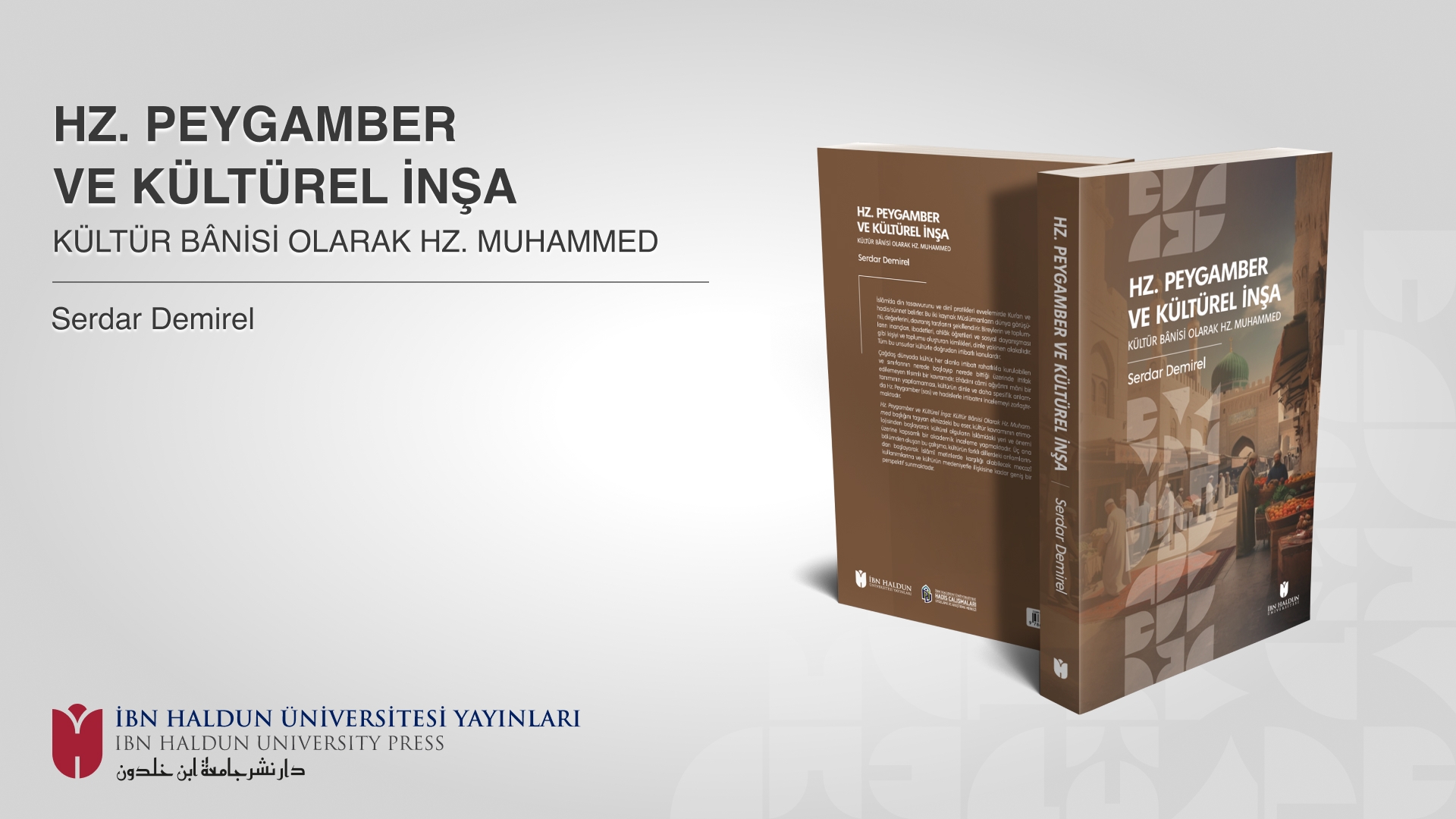


Titled "The Prophet and Cultural Construction: Prophet Muhammad as a Builder of Culture," this work provides a thorough academic analysis of the concept of culture. It begins with the etymology of the term and explores the significance of cultural phenomena within Islam. The study is divided into three main sections, offering a comprehensive perspective that ranges from the meanings of culture in various languages to its metaphorical usages in Islamic texts and its relationship with civilization.
In the lives of Muslims, it is impossible to find a guide as binding and exemplary as Prophet Muhammad (peace be upon him). This belief profoundly shapes their imagination, morality, and behavioral patterns, producing cultural phenomena unique to Muslims. Prof. Dr. Serdar Demirel’s work, The Prophet and Cultural Construction: Prophet Muhammad as a Builder of Culture, aims to examine this subject in depth.
In the modern world, culture is an enigmatic concept that can easily connect to every domain but lacks a consensus on where its boundaries begin and end. The inability to create a comprehensive and exclusive definition complicates the study of culture’s relationship with religion and, more specifically, with Prophet Muhammad (peace be upon him) and his traditions.
Different academic disciplines define culture based on their focal points, making the concept flexible and its scope broad. However, for an academician working on a specific subject, it is crucial to determine the sources they will use and the framework within which they will interpret their findings. Culture’s dynamic nature and its ability to be approached from various perspectives challenge researchers to maintain a clear focus. Understanding and studying culture requires a profound comprehension of societal dynamics, values, and practices, which necessitates drawing upon various academic disciplines.
This book undertakes a comprehensive academic exploration of the etymology of the term “culture” and its significance and role in Islam. Divided into three main sections, the work provides a wide-ranging perspective, from the meanings of culture in different languages to its metaphorical uses in Islamic texts and its relationship with civilization.
The first section examines the historical and etymological origins of the concept of culture. It discusses the Latin-derived term "culture" and its meanings in French, German, English, Chinese, Arabic, and Turkish, highlighting how different geographies and languages either developed local concepts or adopted the term directly. Additionally, the metaphorical uses of the word hars (cultivation) in the Quran and hadiths are explored. The duality of culture and civilization is analyzed through distinctions such as material-spiritual, national-universal, horizontal-vertical, and instrumental-purposeful. Topics such as the broad application of culture, its sources, globalization, focal points, and negative aspects are also examined. This section evaluates culture in the context of humanity’s vicegerency mission and its relationship with the essence of religion. By delving into the etymology, usage in different languages, and focal points of the concept, the groundwork is laid for studying the relationship between religion and culture in subsequent sections.
Although the first section might seem overly detailed for the main subject of the work, understanding what the concept of culture entails in the modern world is essential to provide a solid basis for analyzing the relationship between Prophet Muhammad (peace be upon him) and culture. Without identifying the domains encompassed by the concept and its connections, it would be impossible to accurately assess this relationship.
The second section analyzes the relationship between hadiths, sunnah, and cultural phenomena. It elaborates on the significance of hadiths as religious sources, the role of Prophet Muhammad (peace be upon him) in religion, and his contributions to cultural construction. Furthermore, it explores the connection between cultural phenomena and binding Islamic rulings (taklifi hukm) such as obligatory (fard), necessary (wajib), recommended (sunnah), permissible (mubah), prohibited (haram), and disliked (makruh). The section aims to highlight the role and impact of hadiths in constructing Islamic culture. The terms sunnah and hadith are used synonymously in the study, and the connection to culture is established through the concept of hadith. One reason for this approach is that sunnah, when mentioned alongside culture, is often understood as referring to specific practices such as circumcision (hitan). Another reason is that traditional hadith scholars have frequently used the terms sunnah and hadith interchangeably in their works.
The third section examines the truth that Prophet Muhammad (peace be upon him) has been the most influential builder of Muslim culture throughout history. It investigates the principles and foundational elements he proclaimed, which gave life to Muslim culture. Topics such as the belief in monotheism (tawhid) and the Hereafter, the distinction between the divine and the human, historical consciousness, the balance between material and spiritual life, the roles of knowledge and culture, Islamic law, language and terminology construction, the model of multicultural living, and consultation (shura) are analyzed in detail, demonstrating the Prophet’s guiding influence in the emergence of cultural phenomena.
This book serves as a valuable resource for academics, students, and anyone interested in understanding the intricate relationship between culture and Islam. By examining the place and significance of culture within Islam from historical and theological perspectives, it offers readers a comprehensive outlook.